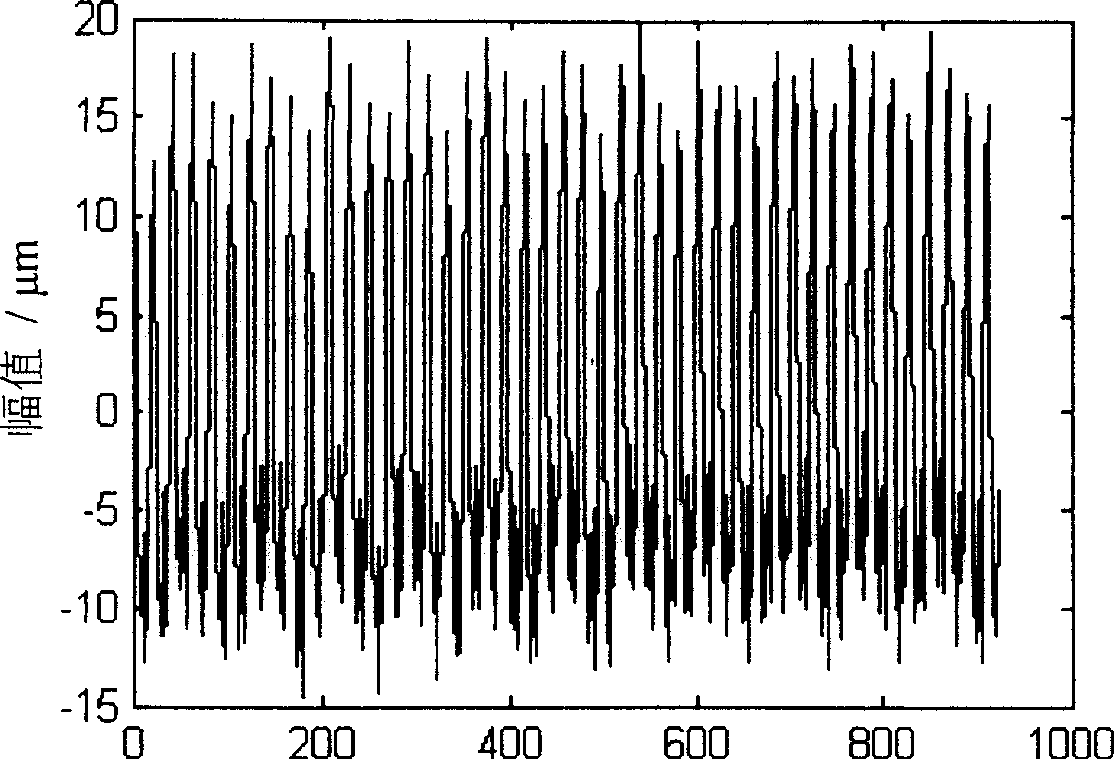Similar waveform based digital signal end data continuation method
A digital signal, similar waveform technology, applied in electrical digital data processing, special data processing applications, instruments, etc., can solve problems such as large prediction errors, low algorithm efficiency, and reduced algorithm speed.
- Summary
- Abstract
- Description
- Claims
- Application Information
AI Technical Summary
Problems solved by technology
Method used
Image
Examples
Embodiment 1
[0086] Figure 3 is a set of industrial field measured data, which is the vibration signal waveform at a bearing bush of a fan in a heavy oil catalytic cracking unit of a domestic oil refinery. The sensor used for signal acquisition is an eddy current (displacement) sensor with a data length of 1024. in Figure 3a is the original signal waveform, Figure 3b It is a local refinement of the original signal, and it can be found that similar components appear repeatedly in the signal, indicating that the signal has cyclostationary characteristics. Figure 5 It is a schematic diagram of the unit of the heavy oil catalytic cracking unit, Figure 3a The signal shown is the vibration signal collected in the X direction of the No. 1 bearing bush of the fan. In order to check the accuracy of the method of the present invention, 50 data points are cut off at both ends of the group of signals to form the signal before the extension, and the most similar waveform extension method proposed...
Embodiment 2
[0088] figure 1 To analyze the signal x(t) using the Empirical Mode Decomposition (EMD) method
[0089] The result of x(t)=0.5·cos(2π·20·t+150°)+cos(2π·100·t) (1), in the figure x(t) is the signal waveform, c 1 , c 2 , r 2 are the first and second intrinsic mode function (intrinsic mode function, IMF) and the remainder obtained after empirical mode decomposition, respectively. Intrinsic mode function c 1 Reflects the cosine signal component with a frequency of 100Hz in the signal x(t), c 2 It reflects the cosine component of the signal with a frequency of 20Hz and an initial phase of 150°. Ideally, c 2 It should be a cosine waveform with an initial phase of 150°, but when actually decomposed, c 2 Severe distortion occurs at the left endpoint, the endpoint effect. remainder r 2 There are also endpoint effects that do not turn into ideal zero vectors. figure 2 is the Hilbert-Huang Transform (HHT) result of the signal x(t). Ideally, it is two straight lines para...
PUM
 Login to View More
Login to View More Abstract
Description
Claims
Application Information
 Login to View More
Login to View More - R&D
- Intellectual Property
- Life Sciences
- Materials
- Tech Scout
- Unparalleled Data Quality
- Higher Quality Content
- 60% Fewer Hallucinations
Browse by: Latest US Patents, China's latest patents, Technical Efficacy Thesaurus, Application Domain, Technology Topic, Popular Technical Reports.
© 2025 PatSnap. All rights reserved.Legal|Privacy policy|Modern Slavery Act Transparency Statement|Sitemap|About US| Contact US: help@patsnap.com



